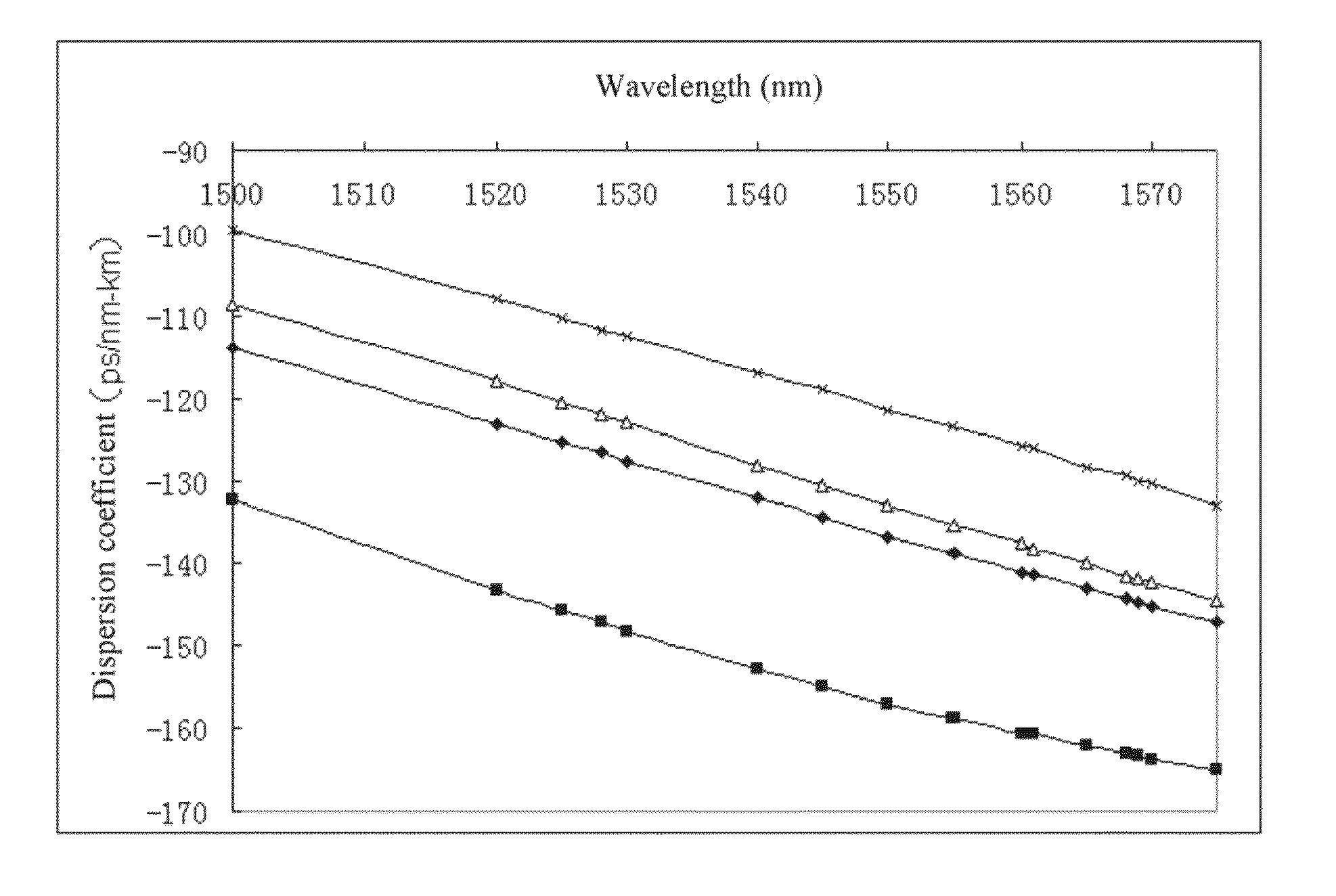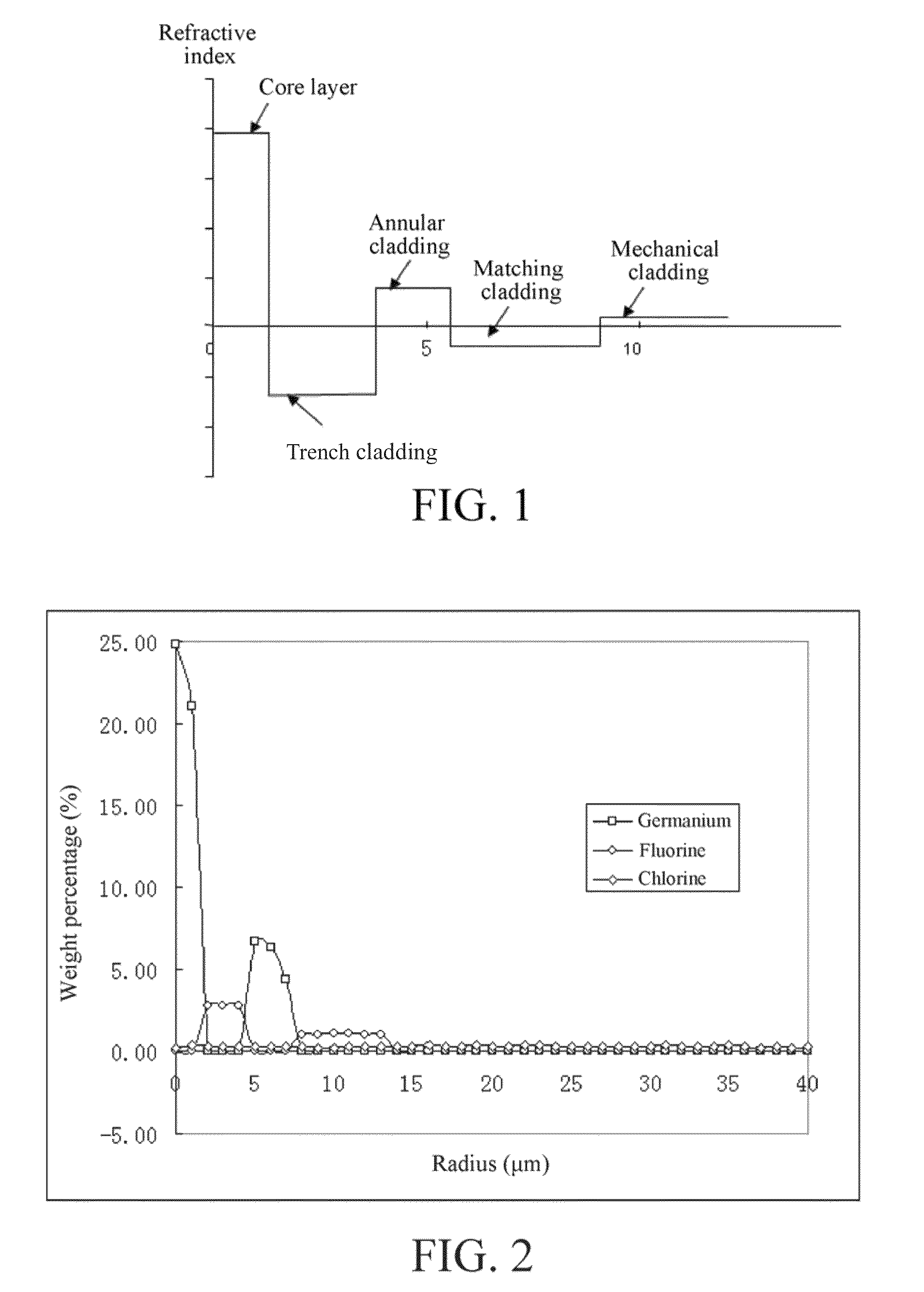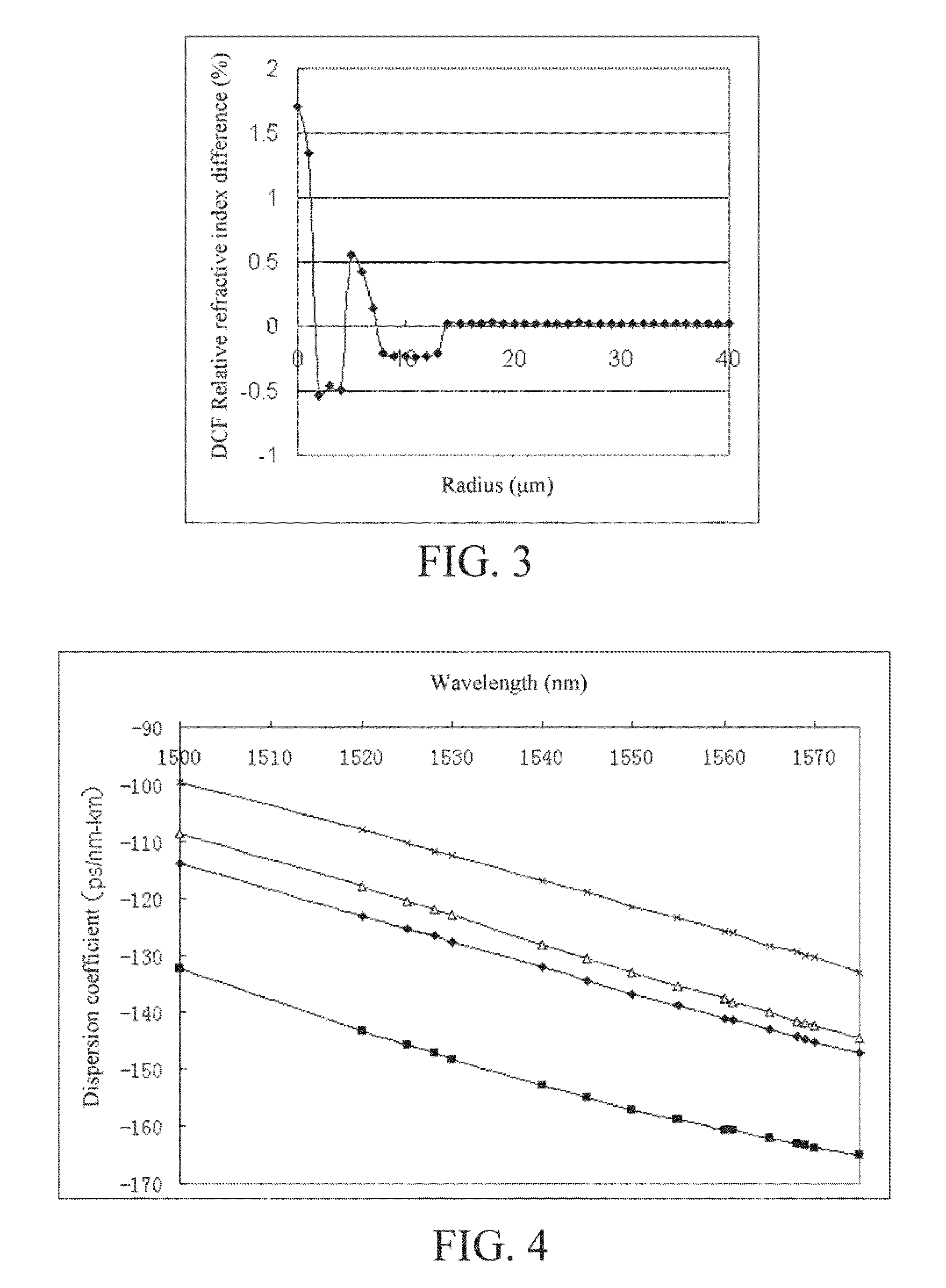Dispersion compensation fiber
a fiber and fiber technology, applied in the field of dispersion compensation fibers, can solve the problems of low splice efficiency, easy leakage, and inability to use, and achieve the effects of reducing splice loss, reducing mode field mismatching, and significantly improving splice efficiency
- Summary
- Abstract
- Description
- Claims
- Application Information
AI Technical Summary
Benefits of technology
Problems solved by technology
Method used
Image
Examples
Embodiment Construction
[0042]The present invention is more particularly described in the following examples that are intended as illustrative only since numerous modifications and variations therein will be apparent to those skilled in the art. Various embodiments of the invention are now described in detail in conjunction with the accompanying drawings. Referring to the drawings, like numbers indicate like components throughout the views.
[0043]In accordance with the purposes of this invention, as embodied and broadly described herein, this invention, in one aspect, relates to a dispersion compensation fiber (DCF).
[0044]Referring to FIG. 1, a composition structure of a DCF is schematically shown in FIG. 1 according to the present invention. The fibers with different performance parameters are obtained by changing weight percentages of elements in the layers according to various embodiments of the present invention. In the embodiments, a PCVD process is adopted to manufacture a core rod of a fiber preform,...
PUM
| Property | Measurement | Unit |
|---|---|---|
| wavelength range | aaaaa | aaaaa |
| time | aaaaa | aaaaa |
| wavelength window | aaaaa | aaaaa |
Abstract
Description
Claims
Application Information
 Login to View More
Login to View More - R&D
- Intellectual Property
- Life Sciences
- Materials
- Tech Scout
- Unparalleled Data Quality
- Higher Quality Content
- 60% Fewer Hallucinations
Browse by: Latest US Patents, China's latest patents, Technical Efficacy Thesaurus, Application Domain, Technology Topic, Popular Technical Reports.
© 2025 PatSnap. All rights reserved.Legal|Privacy policy|Modern Slavery Act Transparency Statement|Sitemap|About US| Contact US: help@patsnap.com



